If you’re craving a cozy meal that’s packed with rich, warming flavors, this Hungarian Goulash (Beef Stew) Recipe is exactly what you need. It’s a tender, paprika-spiced stew that hugs you from the inside out — perfect for chilly evenings or anytime you want a comforting classic.
Jump to:
Why You'll Love This Recipe
This recipe has a special place in my kitchen because it’s both authentic and forgiving—meaning you’ll nail that deep, smoky paprika flavor every time without breaking a sweat. Plus, the slow cooking makes the beef melt-in-your-mouth tender, which is just heavenly.
- Simplicity meets depth: The ingredient list is straightforward, yet the flavors build beautifully into something rich and comforting.
- Perfect texture: Slow cooking ensures beef that’s tender but not mushy, with veggies that hold their shape.
- Authentic Hungarian paprika: Using the right kind of paprika makes all the difference, delivering that classic taste you’re after.
- Flexible cooking methods: Whether you love the oven’s caramelization, the convenience of a slow cooker, or the stove-top route, this recipe adapts to your style.
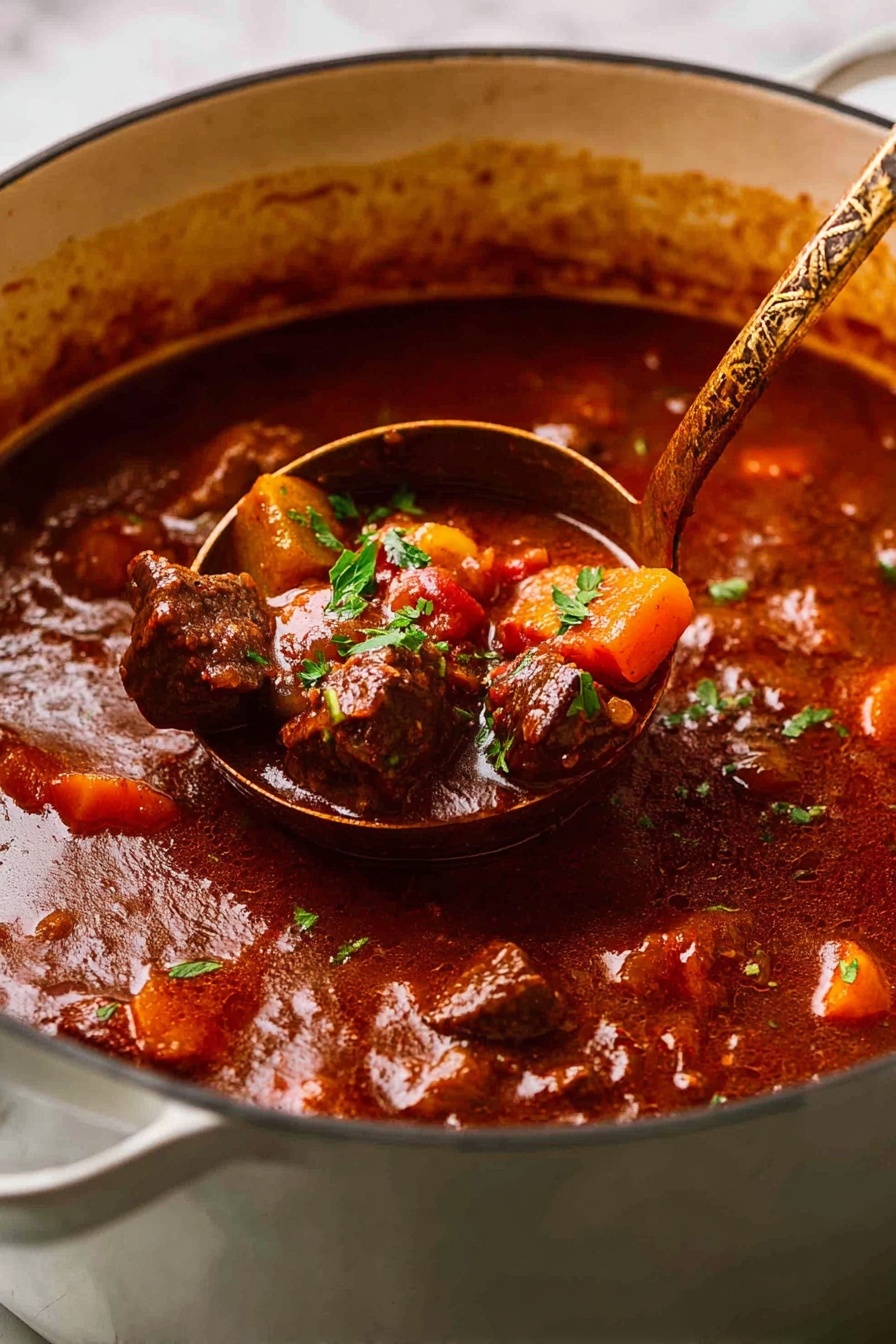
Ingredients & Why They Work
Each ingredient in this Hungarian Goulash (Beef Stew) Recipe plays a role in creating those soulful, balanced flavors. Investing in good quality beef and authentic paprika sets you up for success. Here’s a quick rundown of why these are important:
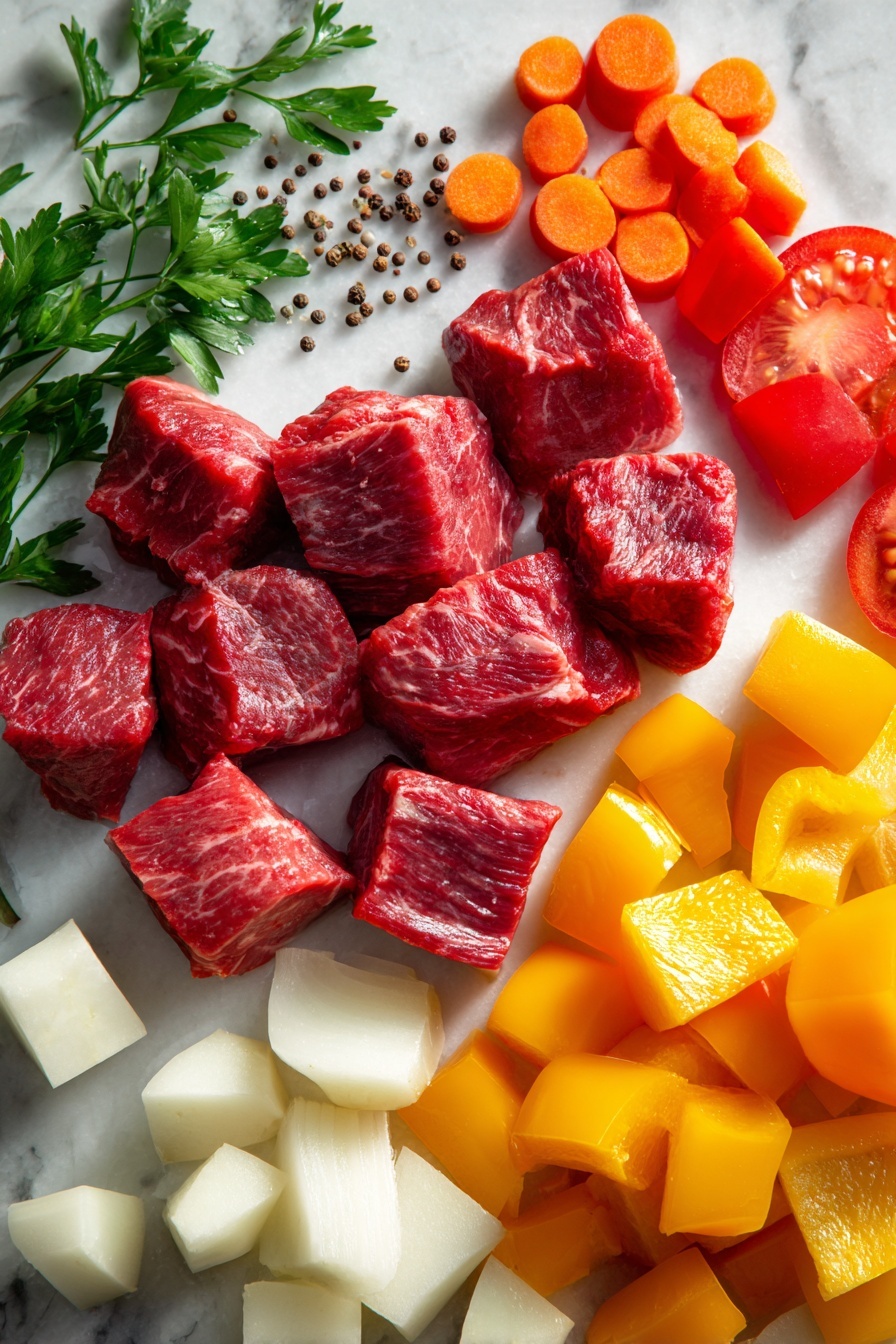
- Beef chuck: This cut has just the right amount of fat and connective tissue that breaks down into silky tenderness during slow cooking.
- Salt and black pepper: Essential for seasoning, but don’t overdo it — you can always adjust at the end.
- Extra virgin olive oil & unsalted butter: The combo adds richness and a subtle nuttiness to the base.
- Brown onions: Slowly caramelized, they build a sweet and savory foundation.
- Garlic: Adds that fragrant depth you can’t do without in stews.
- Capsicum (bell peppers): The red and yellow peppers bring color, sweetness, and texture contrast.
- Tomatoes: Help break down to add acidity and balance the richness.
- Hungarian-style paprika: The star of the show for authentic smoky flavor (note: choose sweet or mild Hungarian paprika, not hot!).
- Caraway seeds: Optional but traditional—introduce a subtle, warm anise note.
- Bay leaf: Adds a layer of earthiness to the slow-cooked broth.
- Beef stock/broth: Use low sodium, so you control the saltiness and get a full-bodied stew.
- Carrots and potatoes: Classic stew veggies that absorb the flavors and add heartiness.
- Fresh parsley: A bright, fresh kick for garnish that lifts the final dish.
Make It Your Way
I love that this Hungarian Goulash (Beef Stew) Recipe is such a versatile base. Over time, I’ve made it heartier, lighter, and even switched up spices according to what I had on hand—feel free to do the same!
- More veg: When I’m feeling extra wholesome, I add celery or parsnips along with the potatoes—just chop similarly to maintain even cooking.
- Spice it up: If you enjoy a touch of heat, sneak in a pinch of smoked chili or a mild hot paprika but be careful not to overpower that classic paprika flavor.
- Make it gluten-free: This recipe is naturally gluten-free, just double-check your stock labels and you’re good to go.
- Slow cooker version: For busy days, tossing it all in the slow cooker is a lifesaver and the flavors meld beautifully over long, gentle heat.
Step-by-Step: How I Make Hungarian Goulash (Beef Stew) Recipe
Step 1: Prepping and Seasoning the Beef
Start by cutting your beef chuck into nice, even 3.5cm cubes. This size holds up well to slow cooking without turning mushy. Toss the beef with half the salt and pepper—seasoning upfront helps build flavor right into the meat. Don’t skip this step; it makes a big difference.
Step 2: Building the Flavor Base
Heat your olive oil and butter in a large, oven-proof Dutch oven over high heat. When it’s shimmering, add the chopped brown onions. Cook them for about 6 minutes until the edges take on a light golden color—this gentle caramelization really boosts the stew’s depth.
Step 3: Browning the Beef
Add the seasoned beef to the pot and stir continuously for around 2 minutes until the outside turns from red to brown. Don’t worry if it doesn’t get a deep golden crust—because of the moisture and cooking style, that’s perfectly normal. We’re building flavor, not frying at this point.
Step 4: Adding Veggies and Spices
Now toss in your garlic, diced capsicum, and tomatoes. Stir for 3 minutes so the tomatoes start to break down, helping thicken the stew later. Sprinkle in the Hungarian paprika, caraway seeds if using, and the bay leaf. Stir for just 30 seconds to wake up those spices—paprika releases its color and aroma quickly!
Step 5: Slow Cooking in the Oven
Pour in the beef stock and stir everything together. Bring the pot to a gentle simmer on the stove, then cover with the lid and transfer to your preheated oven (180°C/350°F). Slow roast for 1.5 hours. If you use a stove or slow cooker, maintain a low heat to avoid scorching the bottom.
Step 6: Adding Potatoes and Carrots
After 1.5 hours, the beef should be tender but not yet falling apart—perfect spot to add the carrots and potatoes. Stir them in, cover again, and return to the oven for 30 more minutes. If after this time the beef isn’t quite “fall-apart” tender, pop it in for extra 10-minute bursts until just right.
Step 7: Final Touch and Serve
Once everything is beautifully tender, ladle the goulash into bowls and sprinkle with freshly chopped parsley. I usually serve it with crusty bread—cheese bread is my favorite for dunking into that rich sauce!
Top Tip
After making this Hungarian Goulash (Beef Stew) Recipe many times, I’ve learned a few tricks that really take it from good to outstanding. These help you avoid common pitfalls and ensure every batch has that delicious, authentic vibe.
- Use quality paprika: I can’t stress this enough—authentic Hungarian paprika is irreplaceable. It gives the dish its signature smoky-sweet flavor that you just won’t get from standard paprika.
- Don’t rush the caramelization: Taking your time with the onions really builds a sweet, mellow base that balances the bold paprika.
- Be patient with the slow cook: The real magic of this stew happens over time. Resist the urge to speed things up—low and slow equals tender beef and happy flavors.
- Careful with salt: Add salt gradually, especially if your stock is pre-salted. Taste as you go to avoid over-seasoning.
How to Serve Hungarian Goulash (Beef Stew) Recipe
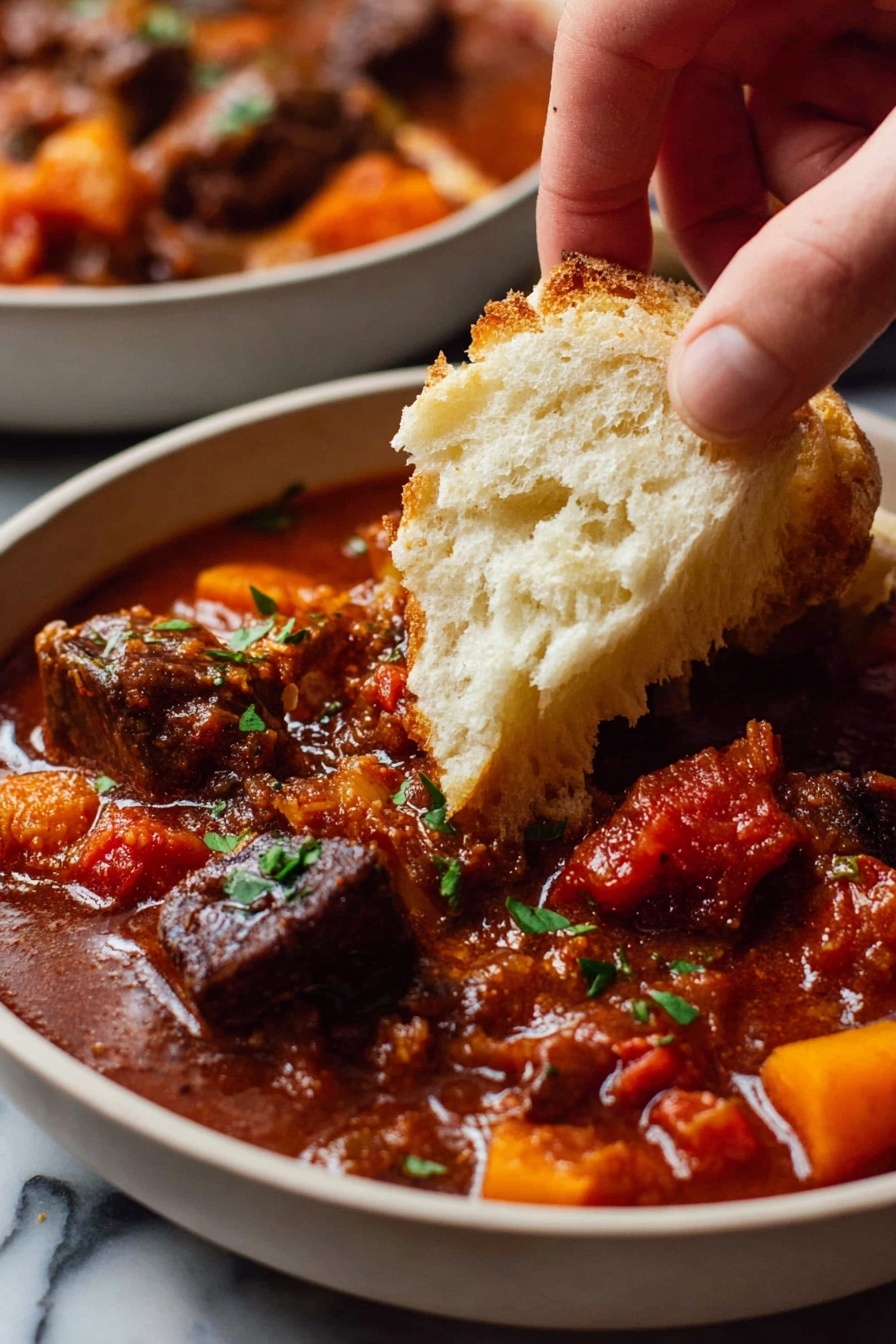
Garnishes
I always add a generous sprinkle of fresh parsley right before serving. It freshens up the heavy stew and adds a pop of vibrant green. Sometimes, I toss on a dollop of sour cream or creme fraiche for a creamy contrast that cuts through the paprika richness.
Side Dishes
Crusty bread is my go-to to soak up the delicious sauce, especially something like a rustic baguette or cheese bread. Mashed potatoes or buttered egg noodles also pair beautifully if you want some extra carbs.
Creative Ways to Present
For special occasions, I’ve served this goulash in mini cast iron pots or rustic bread bowls—it always impresses guests and makes the meal feel extra cozy and festive. Pair with a robust red wine and you’re set for a memorable feast!
Make Ahead and Storage
Storing Leftovers
I usually store leftovers in an airtight container in the fridge, and it keeps great for up to 4-5 days. The flavors actually deepen after a day or two, so leftovers are often tastier than the fresh batch.
Freezing
This Hungarian Goulash (Beef Stew) Recipe freezes beautifully. I freeze portions in sturdy freezer-safe containers with airtight lids. When ready to enjoy, thaw overnight in the fridge for best results.
Reheating
I reheat leftovers gently in a saucepan over low-medium heat, stirring occasionally to avoid scorching. Adding a splash of water or stock helps loosen the sauce if it thickened too much in the fridge.
Frequently Asked Questions:
The best cuts for Hungarian goulash are beef chuck, beef cheeks, or osso bucco (boneless). These cuts have enough fat and connective tissue to become tender and flavorful when slow cooked. Brisket or gravy beef can also be used but might be a touch leaner.
While you can use ordinary paprika, Hungarian paprika has a smoother, sweeter flavor that really defines this dish. If you only have regular paprika, make sure it’s sweet (not hot), but the authentic taste comes from Hungarian or Hungarian-style paprika.
I prefer the oven method because it allows for caramelization on the meat and onions, adding extra flavor without worrying about scorching the base. The stove works too but needs very gentle heat and stirring. Slow cooker is the easiest and tenderizes the beef well, but flavor might be a bit milder.
Leftovers keep well in the fridge for 4 to 5 days and actually taste better after a day. You can freeze the goulash for up to 3 months in airtight containers. Just thaw overnight before reheating gently on the stove.
Final Thoughts
There’s something incredibly satisfying about making this Hungarian Goulash (Beef Stew) Recipe from scratch—the aroma fills your kitchen and the flavors deliver that perfect blend of smoky, tender, and comforting you just can’t beat. Whether you’re cooking for family, friends, or just yourself, I hope you enjoy the process and the delicious results just as much as I do. Give it a try, and I’m sure it’ll become one of your favorite go-to stew recipes too!
Print
Hungarian Goulash (Beef Stew) Recipe
- Prep Time: 15 minutes
- Cook Time: 2 hours 20 minutes
- Total Time: 2 hours 35 minutes
- Yield: 5 servings
- Category: Main Course
- Method: Baking
- Cuisine: Hungarian
Description
Traditional Hungarian Goulash is a hearty beef stew simmered with aromatic paprika, peppers, tomatoes, and root vegetables. Slow-cooked until tender and flavorful, this classic dish is perfect for a comforting main course, served with fresh parsley and optional crusty bread for dipping.
Ingredients
Beef and Seasoning
- 1 kg beef chuck, cut in 3.5cm cubes
- 1 ¾ teaspoon cooking salt/kosher salt
- 1 teaspoon black pepper
- 1 tablespoon extra virgin olive oil
- 2 tablespoon unsalted butter
Vegetables and Aromatics
- 2 brown onions, cut into 1cm squares
- 5 garlic cloves, finely minced
- 2 capsicum/bell peppers (1 red, 1 yellow), cut into 2 cm squares
- 2 tomatoes, cut into 8 wedges then halved
- 2 carrots, peeled, cut lengthwise into quarters then into 1cm pieces
- 2 potatoes, cut into 1.2cm cubes
- 1 tablespoon finely chopped parsley, optional garnish
Spices and Stock
- ¼ cup Hungarian-style paprika
- 1 teaspoon caraway seeds, optional
- 1 bay leaf
- 1 litre low-sodium beef stock/broth
Instructions
- Preheat Oven: Preheat the oven to 180°C (350°F), or prepare your slow cooker or stovetop as alternatives.
- Season Beef: Toss the beef cubes with half of the salt and pepper to season evenly.
- Cook Onion: Heat the olive oil and melt the butter in a large ovenproof Dutch oven over high heat. Add the onions and cook for 6 minutes until edges turn light golden.
- Cook Beef: Add the seasoned beef to the pot and stir for about 2 minutes until the outside color changes from red to brown, avoiding full browning.
- Add Vegetables: Stir in the minced garlic, capsicum, and tomatoes, cooking for 3 minutes until tomatoes start to break down.
- Add Spices: Mix in the Hungarian paprika, caraway seeds (if using), and bay leaf. Stir for 30 seconds to release aromas.
- Slow Cook: Pour in the beef stock, stir, and bring to a simmer. Cover the pot with a lid and transfer to the preheated oven. Cook for 1 hour 30 minutes.
- Add Root Vegetables: Stir in the carrots and potatoes, cover again, and return to the oven. Cook for an additional 30 minutes until beef is very tender and beginning to fall apart. If needed, cook in 10-minute increments until desired tenderness.
- Serve: Ladle the goulash into bowls, garnish with chopped parsley, and serve as is or with crusty bread for dipping.
Notes
- Beef: Beef chuck is ideal, but osso bucco, beef cheeks, gravy beef, or brisket can be substituted. Leaner cuts may affect richness.
- Paprika: Use Hungarian-style paprika for a smoother, less spicy flavor. Avoid hot paprika to prevent excessive heat.
- Caraway Seeds: Optional but traditional for authentic Central European flavor.
- Cooking Methods: Oven is preferred for caramelization. Alternatively, use stove on ultra-low heat covered for 1.5 hours, then add vegetables and cook 30 more minutes. Slow cooker option: 6 hours low with beef, then add vegetables and cook 2 more hours.
- Leftovers: Stew flavors improve overnight. Keeps 4-5 days refrigerated and up to 3 months frozen.
Nutrition
- Serving Size: 1 bowl
- Calories: 380 kcal
- Sugar: 6 g
- Sodium: 450 mg
- Fat: 18 g
- Saturated Fat: 7 g
- Unsaturated Fat: 9 g
- Trans Fat: 0 g
- Carbohydrates: 24 g
- Fiber: 5 g
- Protein: 33 g
- Cholesterol: 85 mg

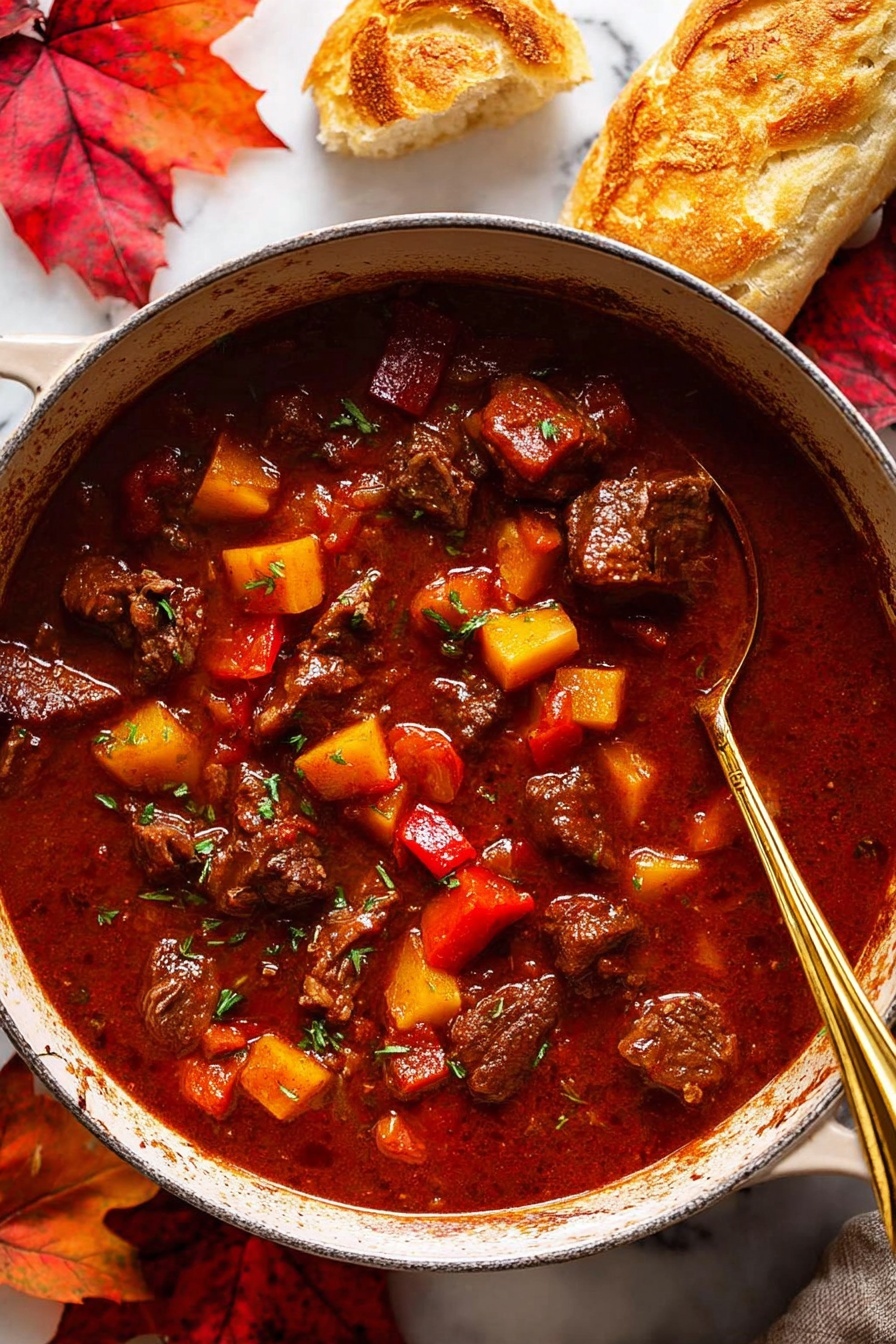



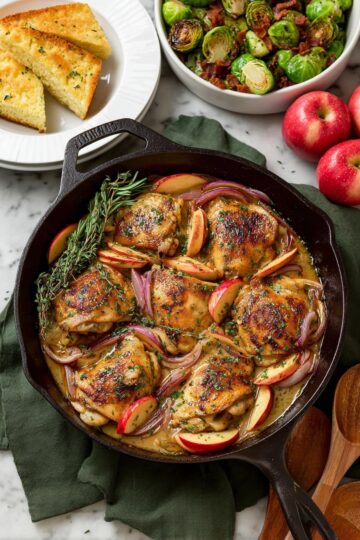
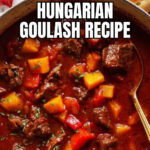
Leave a Reply